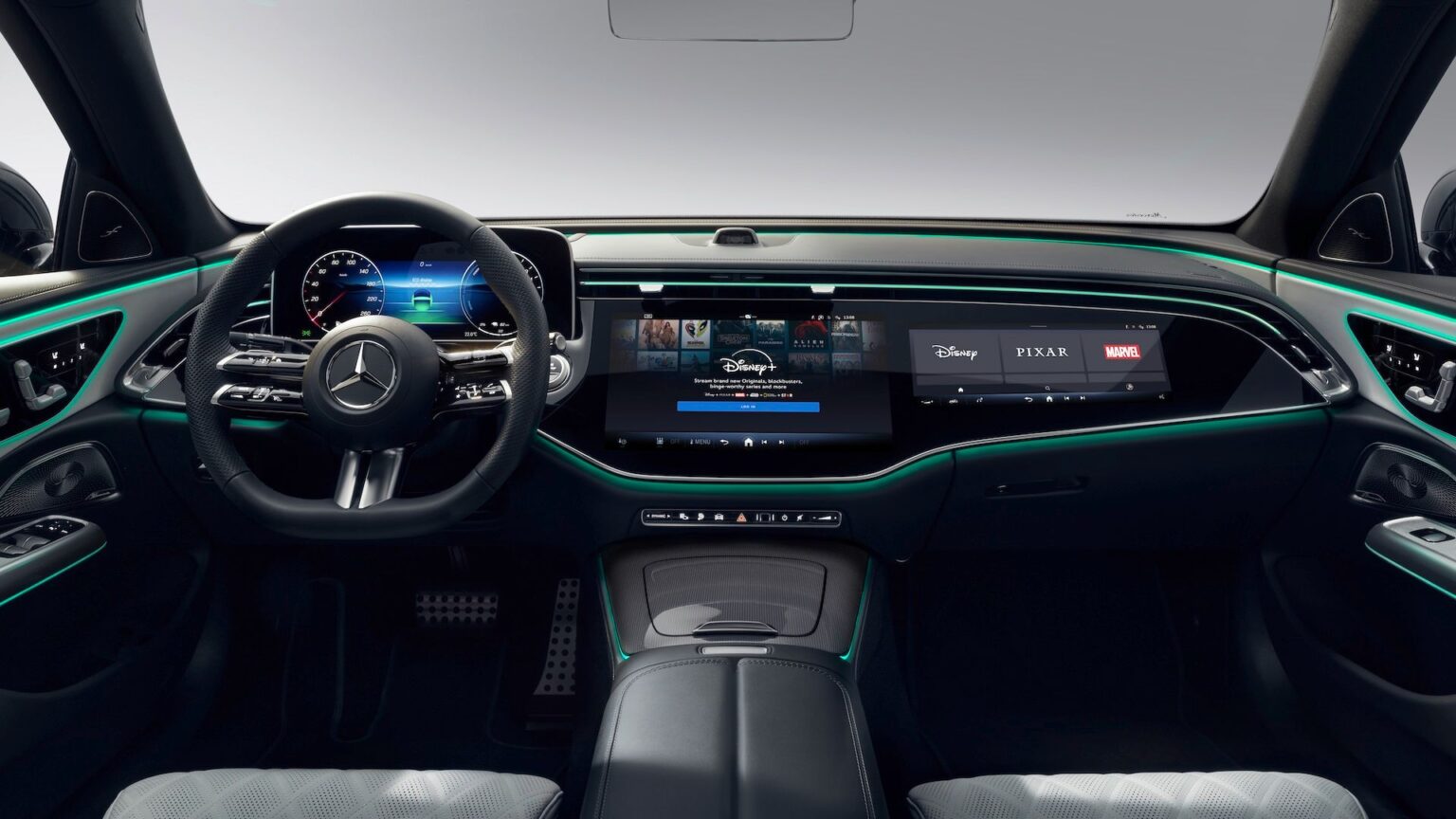Mercedes has gone all-in on screens, notably with the enormous 56-inch Hyperscreen. The German brand has been looking for ways to move beyond the screen to provide better software that helps drivers use better hardware. And it may have just found a very compelling one. Mercedes-Benz just announced a partnership with Disney that will provide seamless Disney+ integration into certain Mercedes vehicles.
Key Takeaways
- Mercedes-Benz and Disney partnered to bring Disney+ to Mercedes vehicles
- The Disney+ App will run natively on the MBUX infotainment system
- Owners will need an active Disney+ subscription
- Only certain Mercedes vehicles will get Disney+ integration
- It could be a helpful feature for parents
Mercedes-Benz Vehicles Are Getting Disney+
Mercedes will integrate the Disney+ app into the MBUX infotainment system. Owners will need the MBUX Entertainment Plus Package and an active Disney+ account. Video can be shown on the passenger display while the vehicle is in motion and on the central display while the car is parked.
Users will be able to access their profiles within the app. So, theoretically, you should be able to stop a show on your Fire TV and pick it back up in the car. The native integration should theoretically work more smoothly and quickly than, say, trying to run it through an app in a future edition of Apple CarPlay.
Which Mercedes Vehicles Are Getting Disney+
Disney+ won’t be available on every Mercedes-Benz vehicle yet. Mercedes says the integration will be available on “applicable models.” The list currently includes the 2024 and later Mercedes E-Class, the 2024 and later CLE 300 and CLE 450, the 2026 C-Class, and the 2026 GLC. Mercedes also notes that the feature will be available on the all-new CLA arriving later this year.
TopSpeed’s Take
As car journalists, we’re probably duty-bound to lament Mercedes focusing on distracting infotainment integrations at the expense of noble, car-enthusiast-friendly efforts like returning the V8 to the maybe departing AMG C 63. But as parents, this feature seems potentially useful, if not quite reaching the point where “every journey becomes an adventure.” Being able to pipe in “Bluey” or the “Frozen” movies may dramatically improve quality of life while, say, charging an EV or waiting for a sibling’s soccer practice to end.
Automakers have us moving toward an end game where the car is yet another device in an integrated virtual world. Brands want to capitalize on our attention, have us spend money, and have us generate data that may be valuable to third parties. However, at present, the technologies to capitalize on our newfound attention are outpacing the technology that would make the driver more of an occupant/consumer to profit from: autonomous driving.
Read the full article here


